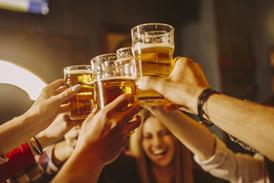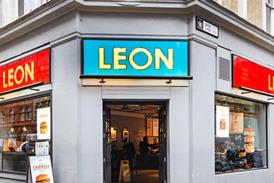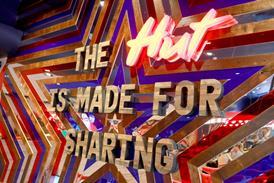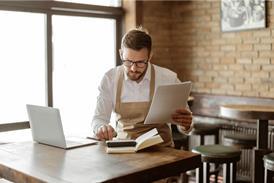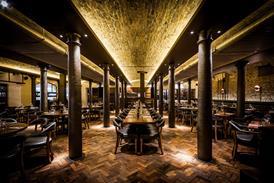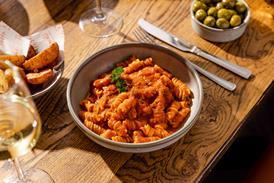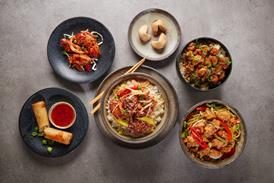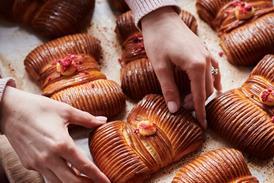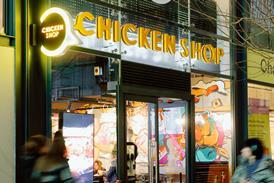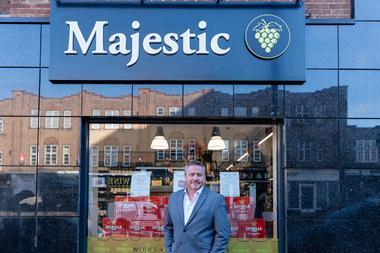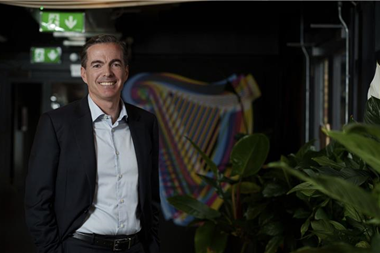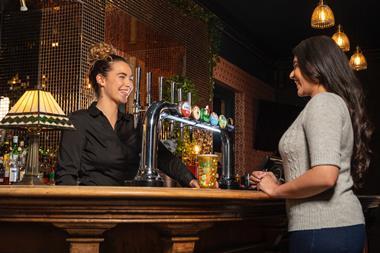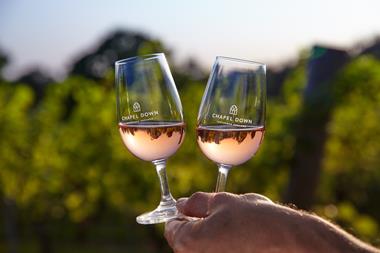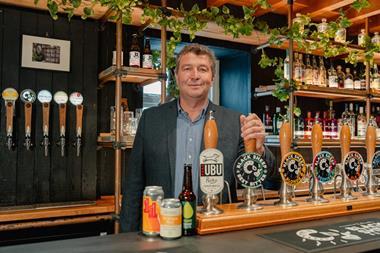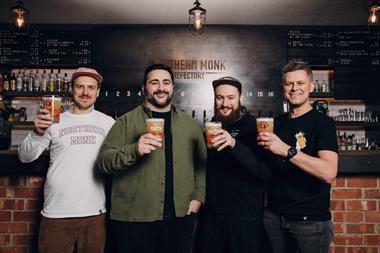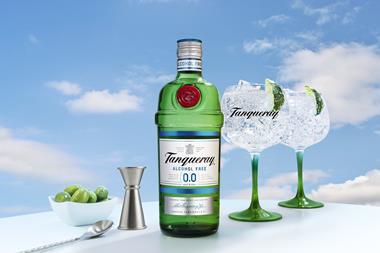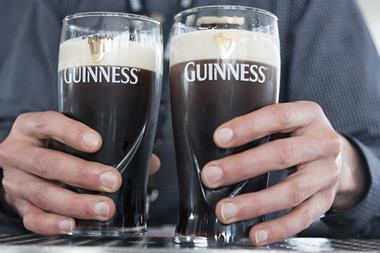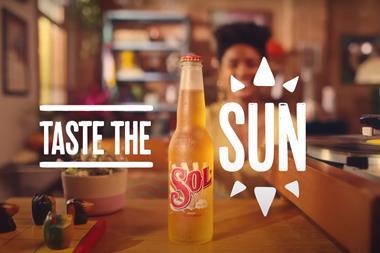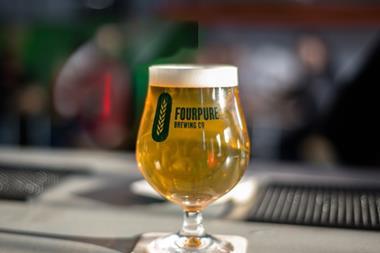Food Tech is developing at an exhilarating rate, but where do the opportunities lie for the hospitality sector? Nadia El Hadery, the founder and chief executive of London Food Tech Week organiser YFood, picks five key trends that are shaping the future.
With so much new tech being released every day, it’s easy to get overwhelmed by the sheer volume of hyperbolic tech-driven promises, and much harder to recognise the truly astounding solutions and innovations that are set to transform the hospitality landscape as we know it. Having worked with hundreds of innovative Food Tech start-ups, hospitality brands and investors, and reported on cutting edge trends and insights from the industry, at YFood we have set our sights on five game-changing trends that are shaping the future of hospitality.
Personalisation
The technology behind personalisation is going to change the world as more retailers, manufacturers and services race towards providing a more personalised experience for their end consumers.
A great company that seeks to heighten our experience with food and engagement with technology through personalisation is Vita Mojo. As a personalised restaurant, Vita Mojo allows diners to choose their food based on personal preferences like weight goals, portion control and even the types of food they should be eating as dictated by their DNA. All this is possible through an algorithm that Vita Mojo uses to enable them to carefully recommend up to nine billion combinations of food when diners place their order.
Another exciting innovation in personalisation is led by Foodpairing in the field of flavour science. Foodpairing works with an algorithm that digs deep into flavour science and has the ability to match and predict flavours to suit the consumers’ personal preference. They conduct research into new and interesting ways flavours can be personalised and paired to a consumer’s personal flavour preference, and recommends those pairings to the consumer.
Our own taste perception is very personal. A really cool research project that has come out of the National University of Singapore (NUS) looks at how you can personalise your cocktail - whether you prefer sweeter or more bitter profiles for example - without actually changing the core ingredients of that cocktail! Their personalised cocktail-making machine can be controlled via an app to create the ultimate cocktail that is perfectly suited to your taste profile.
Beyond taste, the personalisation of texture is also a very promising but up until now underdeveloped space for innovation. Texture is as important as taste when it comes to the holistic experience of food. Some people prefer mushy foods, while others prefer crunchy foods. With 3D printing of food, we can actually play with and manipulate the textures. For example I’m obsessed with avocados but lots of people dislike their slimy texture. What if avocados could be printed crunchy instead? This could help more people enjoy avocados as much as I do.
Personalisation can also be explored through voice. Already you can see a lot of our technology being powered by our voices, what with the likes of Alexa, Echo, Google Home and Siri assisting us at home and on the go. Likewise, voice activated technology is going to become more ubiquitous in the hospitality sector in the coming decade. Orderscape, one such voice technology software company assists the foodservice sector. Their tech enables restaurants to receive mobile orders via voice recognition technology - instructing the receiving restaurants to prepare orders according to their customers’ personal preferences.
Sustainability and Commercial Viability
There have been great attempts to champion greater sustainability in business for years. However if implementing sustainability practices cannot stand up to commercial challenges, sustainability is not going to be achievable. When you start to apply technology to solving these challenges, you can really see the opportunity to achieve both sustainability and commercial viability in businesses.
An example of tech that conflates sustainability and commercial viability is Evogro. They make hydroponic fridges that allow you to grow your food locally. Lots of restaurants - starting with high end ones - have begun adopting these fridges in their kitchens. If you’re growing or working with salad produce on a regular basis, you can be growing the vegetables in-house, harvesting them as you’re using them and driving down your costs over a long period of usage.
Another sustainability hero is bio-bean. They collect waste created from making coffee beverages to be converted into biofuel. Their biofuel is currently used to power London’s buses! They’ve also created logs which can be used at home as a fuel for your fireplace. They sometimes even sell the biofuel back to the restaurants themselves to power the restaurants. In 2017 they collected coffee waste from 22 million cups of coffee to turn into logs. A masterful efficiency play on coffee wastage.
Beyond recycling, we are also seeing a huge shift from recycling to reusing. It’s been categorically proven over and over again that reusing products is more sustainable for the environment. If we start to look at reuse models, we can start to drive down the cost of wastage. With efficiency being a huge point to address at the moment - and between trying to improve margins within the hospitality trade - the reuse model is something that we should be taking more seriously.
One such concept tapping into the reuse model is Cupclub. Cupclub provides reusable cups for consumers to use. You collect your coffee from a cafe that uses the Cupclub cups. After you’ve finished your coffee, you drop off the cups at designated return points. Cupclub collects the cups, washes them and redistributes them back to cafes. The cups are tracked with the same technology in your Oyster card. As a new business, Cupclub is still currently working out their subscription and pricing model. However, once you consider the coffee tax levy that’s recently come into play, it’s potentially a great opportunity and we will see Cupclub piloting with large coffee chains in the country soon.
Another radical innovation fighting in the sustainability corner is Ooho. They produce edible water packaging made of microalgae and we’ll be able to see their product in the retailers in the very near future. You can eat the entire packaging after you’re done drinking the water - leaving absolutely no trace of waste behind.
Efficiency and control
Having come from a trading background where we measured everything all day long, I was used to making real-time decisions every single hour based on the data we had. Moving into the food industry five years ago it came as a shock to me how little data and analytics are used to inform business decisions.
Despite the super tight margins in hospitality, there are simple jump-off points to implement more control within the decision-making aspect of your business. An innovative company that is helping businesses do just that is Tenzo. Tenzo collects real-time data and translates that data into actionable insights. With an operations focus, these data-driven insights can be especially useful during your restaurant’s busiest periods as you are able to better decide how to optimise your teams and reduce staff costs, just by having actual real-time data that you can analyse. Such data is also crucial in helping businesses forecast for their future moving forward.
Waste management is also a good place to harness data for actionable insights. A leader in this field is Winnow. Winnow makes smart weighing metres that kitchens place their rubbish bins on. Food waste is thrown away as usual into the bin and is recorded into a tablet that is attached to the smart weighing metre. You then get a waste report at the end of the week detailing your waste behaviour. Over a three month period, Winnow has proven to be able to regularly halve food waste in kitchens.
Another point at which data collection in restaurants is crucial is with the customers themselves. One such innovator is Yumpingo, which allows restaurants to survey their customers and collect as much feedback data as possible. That data is translated into actionable insights that can inform businesses on how to improve their menu development, operations and consumer engagement. This is crucial in improving guest experiences and sales growth.
On a completely different end of the efficiency spectrum, a fun and sexy piece of tech is drone waiters, which have started piloting in Singapore. Asian food tends to come out very quickly so by being able to make more trips between kitchen to table, drones are delivering food faster and fresher. They’re also able to reduce labour costs. It’s super interesting to see how trends develop and note the conditions which cause them to take off. We’re not quite there yet in the UK but it’s one to watch, as you never know.
Digital communities
Given that set-up costs in the hospitality industry are high, the great question is how do you validate your concept and build your business model at the cheapest cost possible? The answer can be found in digital communities and social commerce.
This unique approach to market validation is demonstrated by Twisted London. Part of the Jungle Creations network which owns sixteen digital communities on social media with 62.7 million followers and 5.5 Billion monthly video views, Twisted is the largest food community on the network. Twisted has not only been building a following over the last few years, but has also been testing and validating F&B concepts on its community through social media content. The team were able to work out what types of concepts work and their audience demographics. Off the back of this research and analysis, they’ve since launched their very first delivery-only restaurant. With access to digital communities, this is an incredibly powerful opportunity for the food industry.
Also leveraging on the digital community is Hooch, which has built a subscription-based community. Each month, subscribers get access to a certain number of free drinks. They can visit a bar that’s part of the Hooch community, where the first drink is free. It’s based off the premise that nobody stays for one drink. You’d probably stay for three or four! The return on each drink that a bar gets is so high that it makes sense to give the first drink away for free, as they tend to get more footfall during their underserved hours.
Experience
With delivery and subscription models making it far easier for consumers to eat restaurant quality food at home, offering memorable and multi-sensory experiences is ever more important to stand out from the crowd.
A design experience that would truly be welcome in the hospitality sector is improved service efficiency. Spending too much time waiting to be served, be it when you first sit down or when you’re expecting the bill is a timeless conundrum faced by both diners and service operators. Innovators like Flyt have been working hand-in-hand with restaurants to deliver seamless integration of efficiency boosting applications and software so that they can level up their service and deliver an improved overall dining experience to the customer. Flyt recently helped Pizza Express integrate their pay-at-table application to their service flow - allowing customers to pay their bill at their table via a mobile app. This lets customers pay as soon as they’re done with their meal, shaving precious time waiting on the bill.
Innovation in the experiential area is also translating into packaging and design that is meant to stimulate the consumer’s senses, while also being a viable commercial investment for businesses. Nanotechnology has been utilised by a Vodka brand to produce their limited edition bottle. By creating the particles that contribute to the luminescence of the bottle, they have been able to create a more light reflective bottle. The packaging is intended to be more attractive to the customer and enhance their experience whilst enjoying the vodka and has been successful in helping the brand increase their sales.
A fun example of multi-sensory at its weirdest is robotic sweets. A researcher from the Swiss design school ECAL has collaborated with various chefs to create animated desserts, chocolate records that play music and lollipops with hidden messages only visible through certain lights. These weird and wonderful but still edible treats get me excited by how multi-sensory engagement is completely transforming the dining experience and taking diners into completely new gastronomic worlds.
- This piece is based on a summary of a talk Nadia gave at YFood’s recent Insight & Innovation Day. Tickets to YFood’s Food & Retail Innovation Event on 17 July are now on sale.

